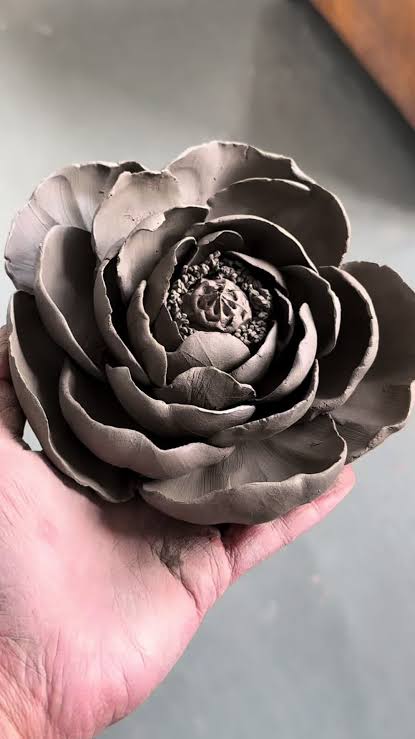If you love beautiful, long-lasting blooms that never fade, ceramic flowers are the perfect blend of art and nature. These delicate creations capture the elegance of real flowers in stunning ceramic form, making them ideal for home décor, gifts, or even as part of unique craft projects.In this guide, you’ll learn the secret to ceramic flowers — how they’re made, the materials used, ways to display them, and simple tips to create your own. Whether you’re an artist, a DIY enthusiast, or simply a lover of timeless beauty, this article will help you unlock the charm and artistry behind ceramic flowers.🌼 Introduction: The Timeless Beauty of Ceramic FlowersCeramic flowers combine the natural grace of blooms with the durability of clay. Each petal and leaf is carefully sculpted, painted, and glazed to mimic the delicate textures of nature. Unlike real flowers, they never wilt, require no maintenance, and last a lifetime.When you learn the secret to ceramic flowers, you discover not only a craft but also a form of expression — one that celebrates color, form, and detail in every petal. From minimalist porcelain designs to colorful, lifelike bouquets, ceramic flowers can complement any aesthetic, from rustic to modern.🌺 The History Behind Ceramic FlowersCeramic flowers date back centuries, with roots in ancient Chinese and European pottery traditions.In China, artisans created delicate porcelain blossoms to decorate imperial palaces and temples.In Europe, ceramic roses and lilies adorned ornate vases, tableware, and jewelry during the 18th century.Today, ceramic flowers have evolved into both fine art pieces and modern home décor, loved across the United States, United Kingdom, and Canada for their elegance and craftsmanship.🌸 Materials and Tools You’ll NeedIf you want to try making ceramic flowers at home, here’s what you’ll need:Clay: Use air-dry clay, polymer clay, or porcelain clay depending on your tools and experience.Sculpting tools: Small knives, shaping tools, and toothpicks for fine details.Rolling pin: To flatten clay evenly.Cutters or molds: For shaping petals and leaves.Paints and glazes: Acrylics, underglazes, or ceramic glazes for color and finish.Kiln or oven: For hardening clay (if not air-dry).Brushes and sponges: For painting and smoothing surfaces.These materials help you recreate the natural beauty of flowers with an artistic twist that lasts forever.🌹 Step-by-Step: How to Make Ceramic FlowersHere’s how you can learn the secret to ceramic flowers and make your own stunning pieces:Step 1: Prepare the ClayKnead your clay until it’s soft and pliable. Roll it out to about ⅛ inch thick.Step 2: Shape the PetalsUse a cutter, mold, or freehand technique to create petal shapes. Each petal should vary slightly for a natural look.Step 3: Form the FlowerStart with a small ball of clay as the flower’s center. Attach petals around it one by one, overlapping slightly. Smooth the joints gently with a wet brush or your fingertips.Step 4: Add DetailsUse a toothpick or sculpting tool to carve delicate lines into petals and leaves. Texture adds realism and charm.Step 5: Dry or Fire the ClayIf using air-dry clay, let it sit for 24–48 hours until fully hardened.For ceramic or porcelain clay, fire it in a kiln following the clay’s instructions.Step 6: Paint and GlazeOnce dry, paint your flower with soft pastels for a natural finish or bold colors for a dramatic effect. Apply glaze for shine and durability before firing again (if applicable).🌷 Creative Uses for Ceramic FlowersOnce you’ve mastered the art of ceramic flowers, there are endless ways to use them:🌼 Home DécorDisplay ceramic flowers in a vase for a centerpiece that never wilts.Attach them to mirrors, photo frames, or wall art for a creative touch.Use mini flowers as table decorations or napkin rings.💍 Fashion & AccessoriesTurn small ceramic blooms into earrings, pendants, or brooches.Add them to hairpins or headbands for weddings and special occasions.🎁 Gifts & KeepsakesGive ceramic flower bouquets as lasting gifts for birthdays, anniversaries, or Valentine’s Day.Personalize with names or dates for a meaningful keepsake.🪴 Garden ArtDecorate garden pots, stepping stones, or fences with weather-resistant ceramic blossoms.💡 Tips for SuccessHere are a few simple tricks to perfect your ceramic flowers every time:Keep your clay moist while working — dry clay cracks easily.Thin petals look more realistic than thick ones.Blend petal edges gently for a natural transition.Experiment with glazes — matte finishes look soft and organic, while glossy glazes create a striking shine.Use reference photos of real flowers to capture accurate shapes and color gradients.🌼 Popular Types of Ceramic FlowersSome flowers lend themselves beautifully to ceramic art. Here are a few favorites:Roses – Classic, elegant, and full of detail.Lilies – Graceful petals that show off beautiful glazes.Tulips – Simple yet sophisticated.Peonies – Perfect for a soft, layered appearance.Cherry Blossoms – Small, delicate, and ideal for wall or jewelry designs.Each one offers a chance to explore different petal shapes, textures, and painting techniques.🎨 The Secret Behind Their BeautySo what’s the real secret to ceramic flowers?It lies in the balance between precision and creativity. Each flower captures both nature’s perfection and the artist’s imagination. The process is meditative — shaping, painting, and transforming raw clay into timeless art.Whether handcrafted by artisans or made as a weekend DIY project, ceramic flowers symbolize patience, beauty, and permanence — things that make them just as captivating as real blooms.🌸 ConclusionOnce you learn the secret to ceramic flowers, you’ll see how simple clay can become something extraordinary. From elegant home décor pieces to heartfelt handmade gifts, ceramic flowers bring color and artistry into your life in a way that never fades.So grab your tools, roll out some clay, and let your creativity bloom! Each petal you shape is a piece of timeless beauty — a flower that will never wither. 🌷✨

